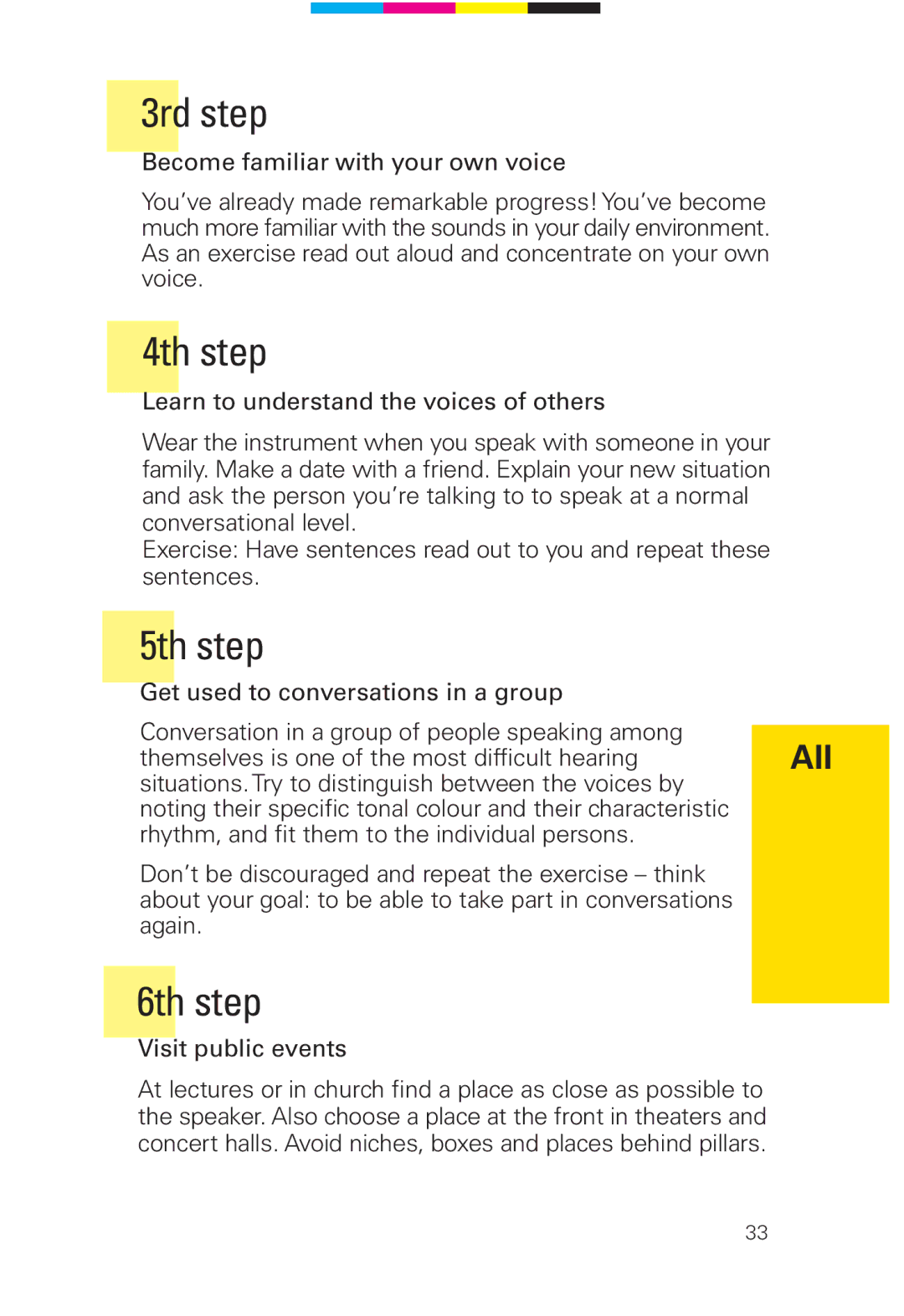
3rd step
Become familiar with your own voice
You’ve already made remarkable progress! You’ve become much more familiar with the sounds in your daily environment. As an exercise read out aloud and concentrate on your own voice.
4th step
Learn to understand the voices of others
Wear the instrument when you speak with someone in your family. Make a date with a friend. Explain your new situation and ask the person you’re talking to to speak at a normal conversational level.
Exercise: Have sentences read out to you and repeat these sentences.
5th step
Get used to conversations in a group
Conversation in a group of people speaking among
themselves is one of the most difficult hearingAll situations. Try to distinguish between the voices by
noting their specific tonal colour and their characteristic rhythm, and fit them to the individual persons.
Don’t be discouraged and repeat the exercise – think about your goal: to be able to take part in conversations again.
6th step
Visit public events
At lectures or in church find a place as close as possible to the speaker. Also choose a place at the front in theaters and concert halls. Avoid niches, boxes and places behind pillars.
33
